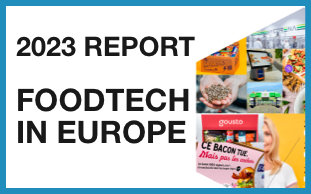A couple of months ago, we published our report on the state of the European FoodTech ecosystem, which you can download for free here. We mostly focused on analysing why less money was invested and how it affected different parts of the agrifood ecosystem. Today, I’d like to focus on the leading ecosystems in Europe.
Collectively, they represent more than 70% of the total amount invested in agrifood tech startups in Europe in 2023 (and also in the first months of this year). But as you can see on the map below, what is really interesting is the very wide difference between these different ecosystems. So, let’s compare them to see if we can learn something from their respective strengths and weaknesses.

First, let’s have a broader look at where the money is going in Europe. As you can see on the graph below, they are three, quite balanced, “big blocks” of investments in Europe if we look at the investments since 2023: AgTech, Delivery and Food Science (itself divided in two parts: brands and alternative proteins).

What is fascinating is when you consider the top five ecosystems by using the same type of graph. As you can see below, the balanced distribution we have at the continental level disappear as soon as you zoom in.

1 – UK, France and Germany have very diverse ecosystems: each with a leading category and a couple of followers:
- The UK: food Science, and more specifically brands (from pet food to beverages) is leading with more than half of the total funding.
- Germany: delivery remains strong (it seems that quick-commerce deals are still a thing).
- France: AgTech, notably animal feed (insects) with strong foodservice and supply chain chain categories.
2 – The Netherlands have an ecosystem highly concentrated on Delivery (and a single unicorn, Picnic) and on AgTech (more diverse).
3 – Switzerland: the country appeared on the radars last year due to a single huge deal ($325M) in Atlas Agro, a bioinputs (AgBiotech). Beyond that, the ecosystem is quite small, and wouldn’t be here.
The best position for an ecosystem is to be diverse as it can always move with the trends. As you can see, the most relevant level is the European level rather than the national ones. In the current context, that’s something that people shouldn’t forget about. 🇪🇺
Also, as we observe more integration of the ecosystems across Europe, it creates some level of specialisation. In turn, for companies looking for innovations in their categories, DigitalFoodLab can help identify where to look for and scout relevant startups, as it becomes less and less relevant to just look at what’s happening in the innovation hub close to your HQ.







